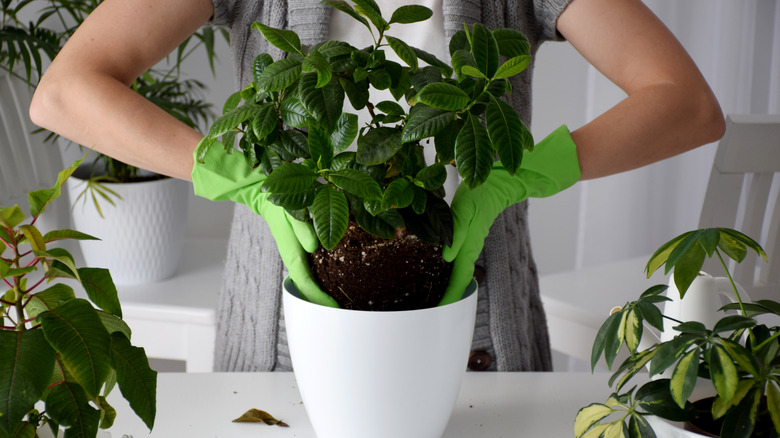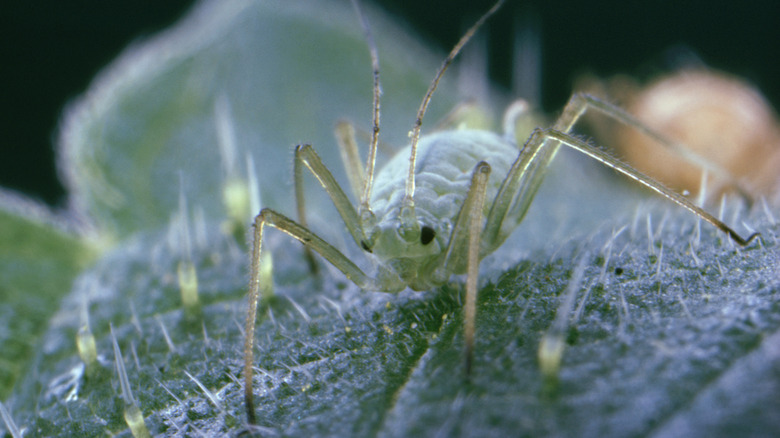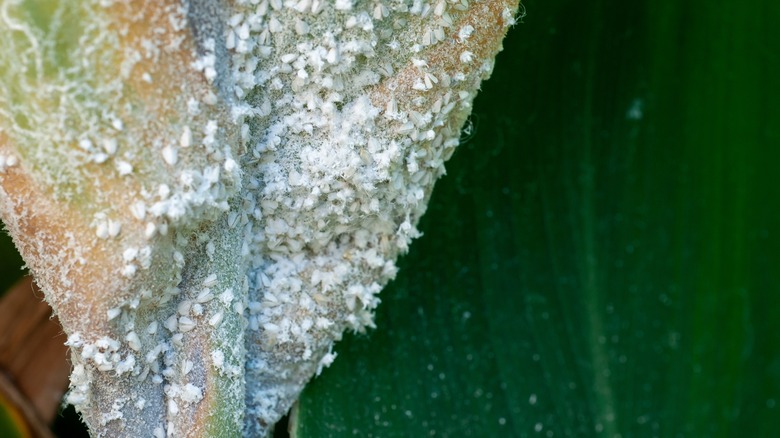These Types Of Insects Could Be Responsible For Your Gardenia's Leaves Turning Black
Indoor plants are often selected based on their ability to grow in full or partial shade, but also for their beauty. It's no wonder why the gardenia plant is so popular among homeowners. A high-maintenance shrub, gardenias like to grow in the sun but also need a little shade sometimes. The main attraction is the plant itself, which makes the stress worth it in the end. Gardenia's sweet-smelling flowers consist of white, delicate petals that resemble the rose and large, waxy, dark green leaves that look supple when healthy. However, things can get ugly fast if the leaves start to turn black. If you've experienced this, then you were probably terrified thinking your precious plant was dying — actually, black leaves on gardenia are a sign that you have a pest infestation caused by aphids or whiteflies.
These pests are sap-sucking bugs and feed on the leaves of your gardenia. Not only does a heavy infestation end up weakening the leaves, turning them yellow and causing the plant to be stunted, but the pests secrete a sticky sweet substance called honeydew. Honeydew resides on the leaves and gives way to black, sooty mold fungi to settle. In order to cure your plant of this condition, you have to get rid of those pesky bugs.
Kill the pests with soap and water
If you can wipe off the black residue off your leaf, then it's definitely black sooty mold. The consequence of having fungal growth on your gardenia's leaves is that it covers the leaf and blocks it from the sun. Hence, it can inhibit photosynthesis and ultimately prevent the plant from feeding itself, which in turn is responsible for stunted growth. The sweet honeydew secreted by the aphids and whiteflies also attracts other bugs like ants, which do further damage to the plant.
To get rid of aphid and whitefly infestations, you can use soap and water spray, which kills them instantaneously. Aphids and whiteflies are soft-bodied insects, which means that the soap can dry them out. Mix two teaspoons of liquid soap with one pint of water and then pour the solution into a spray bottle. Spray it directly onto the pests for it to take effect. You can also spray water on the gardenias' leaves to wash off the sooty mold then dry it off with a napkin.
Take measures to prevent a pest infestation from occurring on your gardenia
The best way to get rid of plant pests is by determining what causes the plant to be susceptible to them in the first place. Aphids have delicate mouthparts designed to suck sap so they are attracted to new, tender leaves on your plant. They also like to hide on the undersides of larger leaves. Similarly, whiteflies not only like to swarm around your gardenia, but they also lay their eggs under its leaves. Make sure to keep your gardenias properly fertilized. Lack of adequate phosphorus and magnesium availability is a causative factor for whiteflies. You should check your plants for pests whenever new vulnerable shoots and leaves are grown.
You can also prevent these tiny pests by using a systemic insecticide such as acephate for aphids and imidacloprid for whiteflies. These insecticides are absorbed by the gardenia plant and render it toxic to thirsty intruders. Aphids and whiteflies could also be controlled biologically using their natural predators such as wasps and ladybugs, but this method of pest control is only suitable for outdoor gardens.


